Welcome to Make Art, Not Waste.
Make art, not waste is an anti-waste slogan for our times.
The “Make art” part of the slogan refers to the practice of recycling beach plastic into artworks. The goal is to communicate how much of a widespread problem ocean plastics is, whilst engaging communities and creating behaviour change.
A culture of convenience and reliance on fossil fuels has got us hooked on single-use, disposable plastic and the ocean is suffering. Find out more here.
The devastating effects of plastics in the ocean are diverse and far-reaching. From the solid waste collecting on beaches all over the world, to the deep sea where most plastic waste resides, and finally to the microscopic plastic particles carrying pathogens and toxic elements which are then transferred to us via the fish we eat… The problem is enormous and a multifaceted approach to solution-finding and strategy implementation is needed.
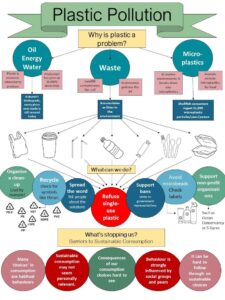 |
| Poster outlining the problem with plastic, Nina Clayton 2017 |
It’s vital to create a positive change. Make art not waste aims to enhance understanding and improve wellbeing by using art to communicate and educate about the dangers of plastic pollution. We can be the change we want to see in the world.
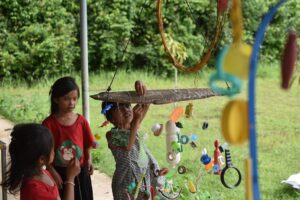 |
| Pupils in Cambodia create hanging sculpture from plastic waste, 2018 |
Using art for plastic pollution reduction is an innovative approach. Below are three reasons why creating art is effective.
1. Clean-ups
- Directly improving the state of the environment
- Building communities and local environmental action groups
- Empowering individuals who may feel alienated from environmental action
- Informing participants on the scale of the problem through direct experience
2. Participatory Action Research
3. Communication and dissemination
Artworks are communication tools. Paintings, sculptures, installations and photos are exhibited in places of interest, e.g. schools, businesses, and galleries. The art media help spread the message online through social media communities, reaching far and wide. Make art not waste photography has been used by anti-waste campaigns all over the world.
 |
| Photo of ocean toothbrushes used by Make art not waste to communicate the plastic pollution problem |
About the author
Make art not waste came about in 2017 when Nina Clayton, an Environmental Science graduate and Dive Master studying marine conservation, became aware of the devastating amount of plastic waste in the ocean after witnessing it washing ashore daily on the remote island of Koh Seh in Cambodia.
On islands with limited resources, the waste problem is not hidden. Daily beach cleans resulted in tonnes of waste needing to be burned. This is where the need for creativity arose. To stop as much plastic as possible from going up in toxic smoke, Nina and other Marine Conservation Cambodia volunteers make artworks, mosaics, sculptures and installations from the beach finds. An outreach programme was created to spread awareness among schools and universities in Cambodia.
Since then, Nina has made it her mission to learn more, share that knowledge and help others make environmentally friendly choices.
Explore this website and it’s regular blog posts to discover more about featured artists all over the world, artwork techniques you can try, as well as how you can get involved in making a positive change for the ocean.
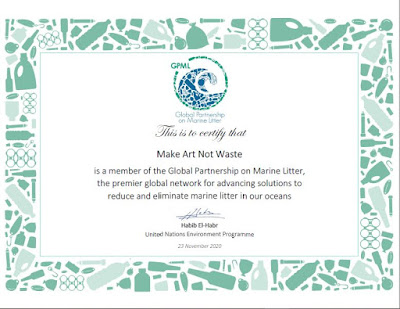
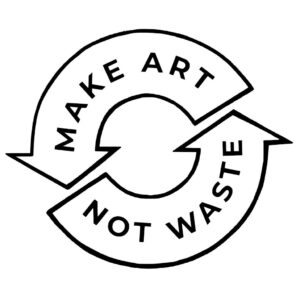

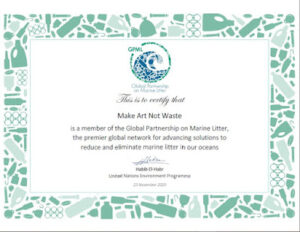
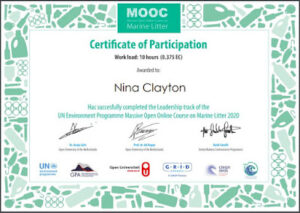
Well done Nina!
Go Nina!
Wonderful initiative!
Well done Nina 🙂
Nice one Nina
This article provided me with a lot of useful information about Fundraising Site for Recycling Advertising. The material you presented during this post provided me with some excellent information. Continue to post.